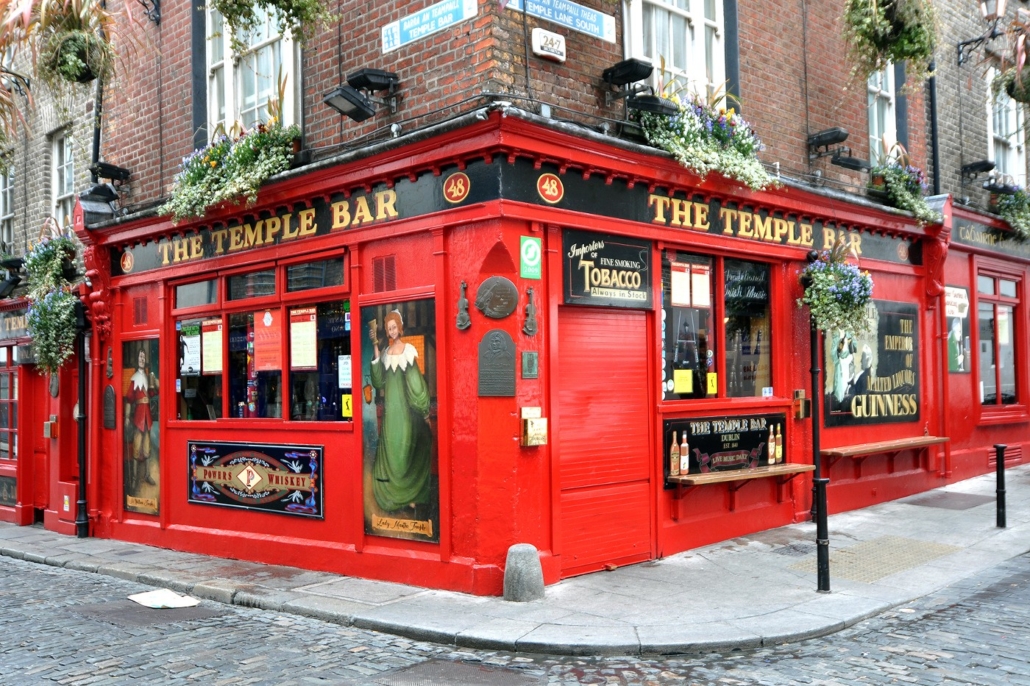Capital of the Republic of Ireland, one of the northernmost countries in Europe, Dublin is located in the north-east of the country, overlooking the mouth of the River Liffey, near the Irish Sea.
It is a cosmopolitan but compact city, like a large village, easy to get around on foot and rich in tradition. Its inhabitants are welcoming and there are many colleges and locations where students from all over the world can spend internships and study holidays.
Full of monuments, historic buildings but also pubs, restaurants, shops and parks, it is a truly perfect city for a long stay or even a weekend.
Linked to the works and deeds of St. Patrick, Dublin has experienced different dominations, from the Danish, to the Viking, Norman and, later, English ones. The independent Republic of Ireland has only existed since the 1940s and recent history mixes in landscapes, culture and customs (such as right-hand drive), with the influences of the past.
A curiosity: from almost every point of the city you will notice “The Spire” or Monument of Light, a steel structure that stands tall and can be seen from practically anywhere. Built with a symbolic value to represent innovation, the new urban plan but also in the name of the independence of Ireland.
A city full of life and initiatives, with many events throughout the year such as the Tradfest Temple Bar, dedicated to folk music, or the Bloomsday Festival.
Birthplace of James Joyce, a brewing city, a seaside city, a city of students and young people, a green city; Dublin is all these cities!
The climate is oceanic, with frequent rains in all seasons, but not excessively harsh winters. In summer the climate is pleasant and it is difficult to exceed 20° during the day.
What to see in Dublin
There are so many things to see and do in Dublin. We list the most important below.
Dublin Castle: built where a Viking fortress previously stood, Dublin Castle was commissioned in 1239 by Giovanni Senza Terra, and over the centuries it has always been used by English institutions with different uses such as the seat of the court, military fortress, political meeting place. Today the castle is still used for official state events. To see: the States Apartments, the St. Patrick’s Hall, the Chapel Royal, the medieval excavations, and the Throne Room.
Temple Bar: it is the medieval district, one of the oldest in the city, but it is known for being the evening meeting point in Dublin, as most of the pubs and clubs are concentrated here, in many of which it is also possible to listen to folk music . It is the beating heart of Dublin by night.
St. Patrick’s Cathedral: is one of the oldest Christian sites, dedicated to St. Patrick who was baptized here. Its interiors are beautiful, from the door, to the choir, to Jonathan Swift’s grave. The church also attracted the attention of Benjamin Guinness who worked with his family on the conservation of the cathedral and his works.
Guinness Storehouse: the Guinness brewery, a place to visit not only the processes of making the famous beer, but also to learn about its history, which dates back to the mid-1700s and which since then has brought the Guinness family to the top worldwide in production and sale of their beer.
Where to sleep in Dublin
There are many hotels in Dublin but apartments and guest houses are also very common, as Dublin is a university city and a destination for students. Costs are not always convenient but if you don’t stay in the center it is possible to find excellent hotels at reasonable prices.





